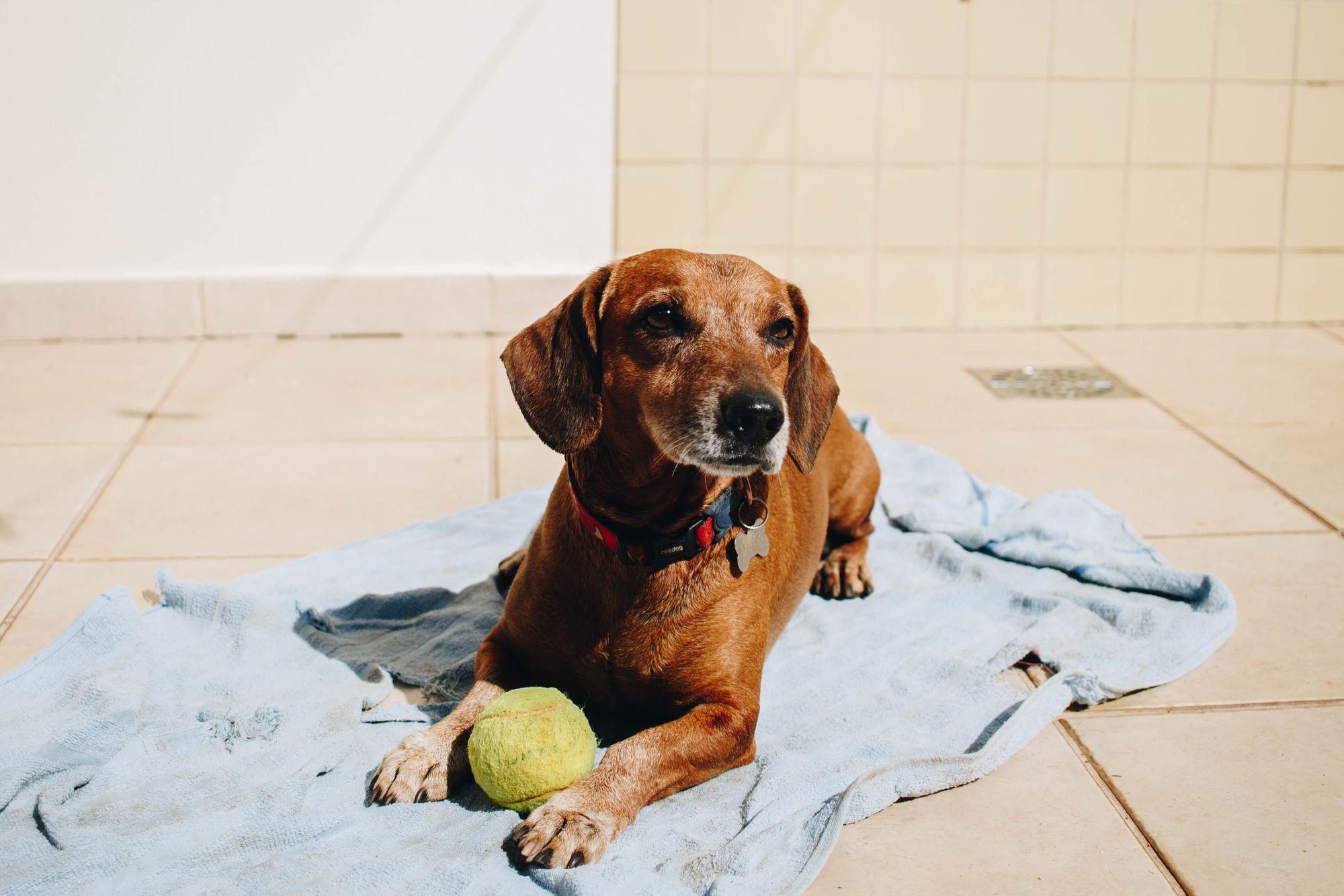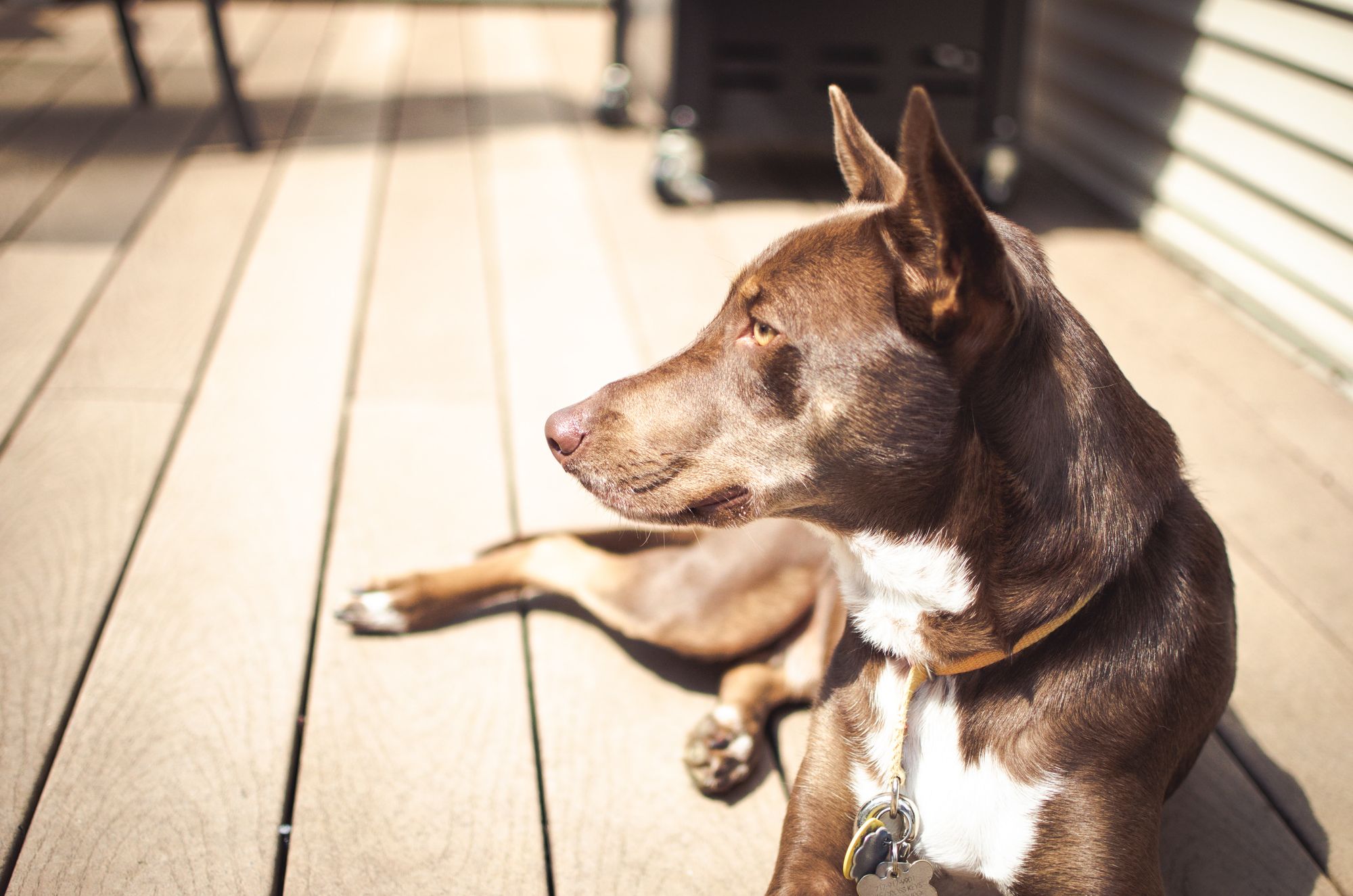Dog skin cancer can be a significant worry for many dog owners. Research shows that 1 in 4 dogs will likely develop some kind of skin cancer or tumor in their lifetime, and canine skin cancer is one of the most common types of cancer in dogs.
Stop Googling - Ask a Real Vet
The good news is that growth in your dog's skin is usually not life-threatening. Still, it's vital to know when to worry and when not to. After all, understanding the symptoms, appearance, diagnosis, and treatment options for dog skin cancer is crucial to ensuring the well-being and longevity of our canine companions.
Content:
- Can Dogs Get Skin Cancer
- Symptoms of Skin Cancer in Dogs
- What Does Dog Skin Cancer Look Like
- Diagnosing Skin Cancer in Dogs
- Skin Cancer Treatment Options
- FAQ
- Conclusion
Can Dogs Get Skin Cancer
Dogs can and do get skin cancer. While AVMA research shows it is more common in certain breeds and older dogs, skin cancer can affect dogs of any age, size, or breed. The most common types of skin cancer in dogs include mast cell tumors, squamous cell carcinomas, and melanomas.
Tumors in dogs' skin happen when there is an abnormal growth of cells. They can be benign and harmless or malignant and spread to other tissues in the body, where they quickly become life-threatening.
Luckily, studies show that between 60 and 80% of skin tumors in dogs are benign, so most of the time, lumps and bumps in a dog's skin are nothing to worry about. But you still need to see the vet to make sure!
Several factors, such as exposure to UV rays in sunlight, hormonal imbalances, chemicals, genetics, and certain environmental factors, can lead to skin cancer in dogs. Certain viruses in dogs can cause cancer or growth, too, such as the oral papillomavirus (although papillomas are usually benign warts or growths vs. cancer).
Since chemical exposure or sunbathing can cause skin cancer, keeping a Petcube Camera trained on your dog can help. This way, you'll know if your light-skinned dog spends much time in the sun and needs canine sunblock applied every 4 to 6 hours. This is because dogs with pink skin don't have the pigment required to protect their skin from the sun.
Or you can keep tabs on if your dog is getting into places they shouldn't, such as the garage or wherever you may be keeping toxic household products.
Some dog breeds are particularly prone to developing skin cancer; these include:
- Airedale Terriers;
- Boxers;
- Cocker Spaniels;
- English Springer Spaniel;
- Chihuahuas;
- Boston Terriers;
- Poodles;
- Chow Chows;
- Doberman Pinschers;
- Golden Retrievers;
- Labrador Retrievers;
- Irish Setters;
- Miniature Schnauzers;
- Scottish Terrier;
- Rottweilers;
- English Bull Terriers.
But if you've noticed something suspicious on your dog's skin, how do you know if it's cancer? Let's look at common symptoms and what dog skin cancer looks like.
Symptoms of Skin Cancer in Dogs
Recognizing the early signs and symptoms of skin cancer in dogs is vital for early detection and prompt treatment. Remember that the signs of skin cancer in dogs can differ greatly depending on the type of cancer you may be dealing with. Here are some common signs that can help you tell if a dog has skin cancer:
- Abnormal lumps or growths on the skin;
- Firm, raised, wart-like growths;
- Ulcerated or bleeding sores that do not heal;
- Changes in the color or texture of the skin, such as a black spot or scab that won't heal;
- Swelling, inflammation, or a rash in one spot that doesn’t go away;
- Persistent itching, scratching, or licking of a particular area;
- Signs of pain in one area, like a lip.
What Does Dog Skin Cancer Look Like
Dog skin cancer can manifest in various ways, depending on the type and stage of the cancer. Here are some characteristics to help identify different types of skin cancer:
- Mast Cell Tumors may appear as raised, firm, and sometimes ulcerated (open sores that won't heal) lumps on the skin. The color can range from pink to red or even dark.
- Squamous Cell Carcinomas commonly occur on the head, lower legs, and tummy. They may appear as scaly or crusty areas or raised warts, sometimes accompanied by bleeding or discharge.
- Melanomas can resemble dark (but not always) pigmented masses or nodules on the skin. You often find them around the mouth, lips, or nails. They may be benign (non-cancerous) or malignant (cancerous) and require proper examination and diagnosis.

However, dogs have a massive range of skin cancer types, depending on which cells are affected. Technically, something as harmless as a skin tag is also a tumor since it's an abnormal growth of cells. This is why a vet must make a complete diagnosis if you see anything strange in your dog's skin.
Diagnosing Skin Cancer in Dogs
If you're wondering how to spot skin cancer in dogs, remember that it's impossible to know just by looking at whether a lump is cancerous. To diagnose skin cancer in dogs, a veterinarian will typically conduct a comprehensive examination, including the following steps:
- Physical examination: The vet will inspect the skin, looking for any abnormal growths, changes in color or texture, or other visible signs of skin cancer.
- Biopsy: A small sample of the affected tissue is collected and sent for laboratory analysis. This allows for a definitive diagnosis and determination of the cancer type.
- Imaging tests: X-rays, ultrasounds, or other imaging techniques may be employed to determine if the cancer has spread to internal organs or lymph nodes.
Skin Cancer Treatment Options
Treatment for dog skin cancer varies depending on the type, stage, and location. Here are some standard treatment options:
- Surgical tumor removal is often the first choice, especially for localized tumors. It aims to eliminate the cancerous cells and prevent further spread.
- Radiation therapy employs targeted radiation to destroy cancer cells and reduce tumor size. It is handy for tumors that cannot be completely removed through surgery.
- Certain types of skin cancer in dogs may respond to chemotherapy, which uses drugs to kill cancer cells or inhibit their growth. It is often used in cases where the cancer has spread or cannot be surgically removed.
- Immunotherapy: This treatment option utilizes the dog's immune system to target and destroy cancer cells. It can be combined with other treatments to eliminate malignant tumor cells.

Remember, most lumps and tumors in dogs are benign, and the vet may opt to do nothing about them, especially in older dogs that aren't in danger. So, it's important to establish quickly whether anything unusual on your dog's skin is an emergency.
Petcube's Emergency Fund for emergency vet bills offers a 24/7 online vet as part of your plan. This way, if you notice a lump, bump, or odd sore on your dog, you can immediately consult a vet online who can help you ascertain whether or not your dog needs immediate care.
This can help prevent too much unnecessary stress, especially after hours.
After all, the cost of checking a dog for skin cancer can be steep. The initial visit may cost around $300. After that, prices will rise from about $2000 to $6000, depending on the treatment needed, from surgery to chemotherapy.
Read more: 7 Most Common Types of Dog Skin Infections
FAQ
What is the life expectancy of dogs with skin cancer?
Dogs with benign tumors in their skin shouldn't have their life expectancy affected by skin cancer. In the case of dogs with malignant skin cancer, life expectancy depends on the type and stage of cancer, how early the problem was caught, and the dog's age and health.
Dogs with aggressive fibrosarcoma and squamous cell carcinoma have a life expectancy of less than a year. Dogs with untreated cancer usually do not live longer than a year.
How fast does dog skin cancer spread?
How fast dog skin cancer spreads depends entirely on the type of cancer. Malignant melanomas metastasize (spread) early to organs like the lungs and lymph nodes, often becoming deadly within less than 8 months. But remember, with early intervention and treatment, many dogs with skin cancer fully recover.
Final Thoughts
Skin cancer is a serious concern for dogs, and recognizing the symptoms, understanding the appearance, and seeking prompt veterinary care is crucial for early detection and effective treatment. Regularly inspecting your dog's skin and consulting with a veterinarian if you notice any abnormalities can significantly increase the chances of successful outcomes.
Was this article helpful?
Help us make our articles even better









